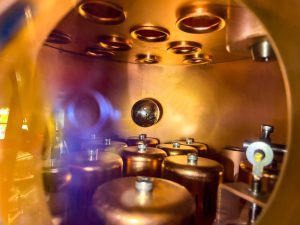Introduction

Alcohol distillation columns have long been a cornerstone of the beverage industry, facilitating the production of various alcoholic beverages. Understanding the science behind these columns is crucial for optimizing their efficiency and ensuring the quality of the final product. In this article, we delve into the intricate workings of alcohol distillation columns, exploring their design, operation, and the principles of distillation.
The Basics of Alcohol Distillation
To further comprehend the functioning of alcohol distillation columns, it’s crucial to delve deeper into the basics of distillation. Distillation is a fundamental separation process utilized across various industries, including beverage production, pharmaceuticals, and petrochemicals. At its core, distillation exploits differences in the boiling points of the components within a liquid mixture to achieve separation.
In the context of alcohol production, the primary objective of distillation is to isolate ethanol from water and other impurities present in the fermented liquid, known as the “wash” or “beer.” Ethanol and water form an azeotropic mixture, meaning they boil at a specific composition and temperature, making complete separation challenging through simple distillation alone.
Alcohol distillation columns employ fractional distillation, a sophisticated technique that enhances separation efficiency by incorporating multiple vaporization-condensation cycles within the column. This process exploits the principles of equilibrium thermodynamics, wherein the vapor and liquid phases reach a state of equilibrium with respect to composition and temperature.
Within the column, the liquid mixture, typically introduced at the top, undergoes repeated vaporization and condensation as it travels down through the column. The column is equipped with trays or packing material, which provide surface area for vapor-liquid contact and facilitate the exchange of components between the vapor and liquid phases.
As the vapor rises through the column, it becomes enriched in the more volatile component, in this case, ethanol, while the liquid becomes increasingly depleted of ethanol. This enrichment occurs due to the differential vaporization of the components based on their respective volatility and affinity for the vapor phase.
Design and Components of Alcohol Distillation Columns
Alcohol distillation columns come in various designs, each tailored to specific production requirements. However, they typically consist of several key components, including the column itself, condensers, reboilers, trays or packing, and auxiliary equipment such as pumps and temperature sensors. The column’s design influences factors such as separation efficiency, energy consumption, and throughput.
Operating Principles and Process Optimization
Optimizing the operation of alcohol distillation columns is crucial for maximizing ethanol yield and maintaining product quality. Factors such as temperature, pressure, reflux ratio, and feed composition play pivotal roles in determining column performance. Understanding the interplay of these variables enables operators to fine-tune the distillation process for optimal results. Computational models and process simulation software are invaluable tools for predicting column behavior and optimizing operating parameters.
Comparison of Different Alcohol Distillation Column Designs
| Design Type | Key Features | Advantages | Disadvantages |
|---|---|---|---|
| Pot Still | Simple design, suitable for small-scale | Retains flavor compounds, versatile | Lower purity, less efficient |
| Column Still | Tall column with trays or packing | High purity, efficient, scalable | Higher initial cost, complex operation |
| Reflux Still | Incorporates reflux to enhance separation | Very high purity, precise control | Energy-intensive, longer processing |
Applications and Industry Trends

Alcohol distillation columns find widespread application not only in beverage production but also in pharmaceuticals, fuel ethanol, and chemical manufacturing. Advancements in column design, materials, and automation technologies are driving efficiency improvements and cost reductions across industries. Additionally, growing interest in sustainable practices is spurring innovation in ethanol production, with an emphasis on energy efficiency and waste minimization.
Conclusion
Alcohol distillation columns are intricate yet essential components of various industrial processes, enabling the separation and purification of ethanol from liquid mixtures. Understanding the underlying science and engineering principles is crucial for optimizing column performance and achieving desired product specifications. As technology continues to advance, we can expect further enhancements in the efficiency, sustainability, and versatility of alcohol distillation systems.
FAQ
Q: What is the role of reflux in alcohol distillation?
A: Reflux enhances separation by returning condensed vapor back into the column, increasing contact between vapor and liquid phases and promoting further purification.
Q: How do column materials impact distillation performance?
A: Column materials must withstand corrosive environments and high temperatures while facilitating efficient heat transfer. Stainless steel and copper are commonly used for their durability and thermal conductivity.
Q: Can alcohol distillation columns be used for other purposes besides ethanol production?
A: Yes, alcohol distillation columns are versatile and find applications in various industries, including pharmaceuticals, fuel ethanol, and chemical manufacturing.
This comprehensive guide provides insights into the science behind alcohol distillation columns, offering valuable information for professionals and enthusiasts alike. By understanding the principles of distillation and the design considerations of these columns, stakeholders can optimize their processes for improved efficiency and product quality.
